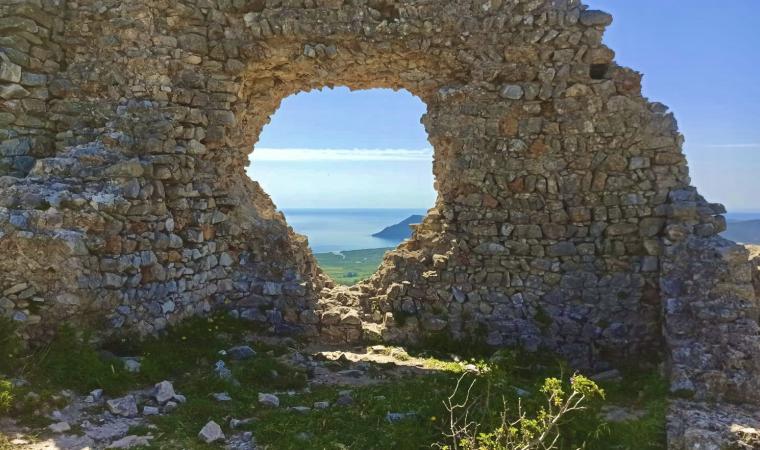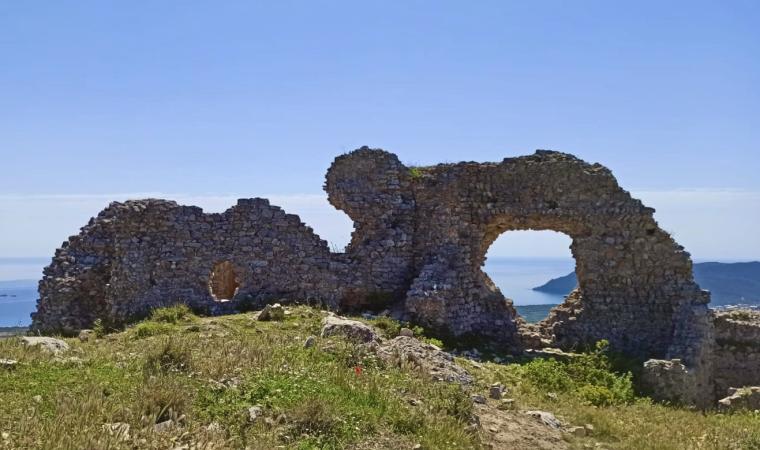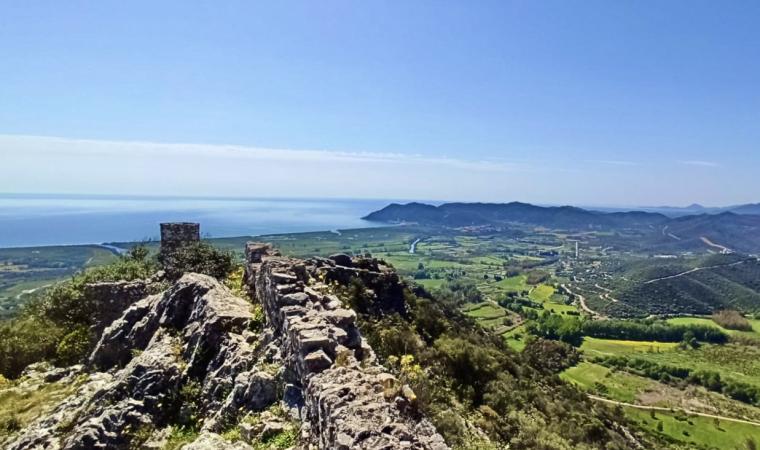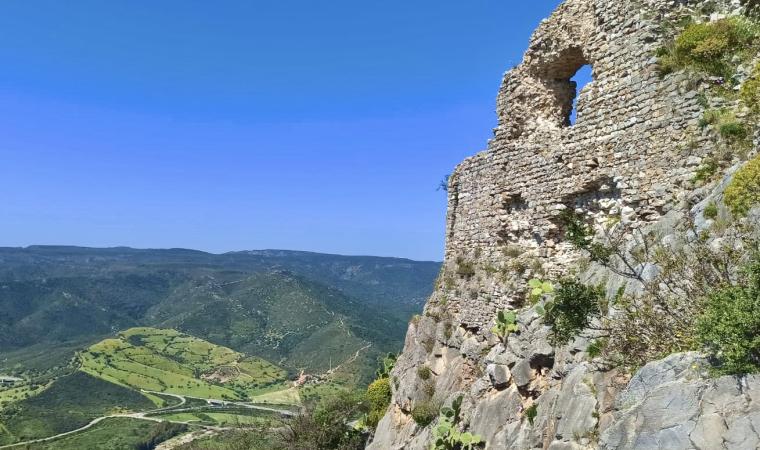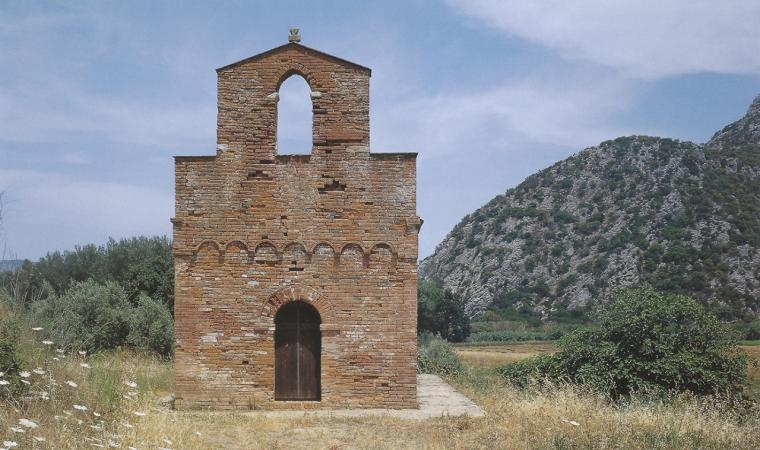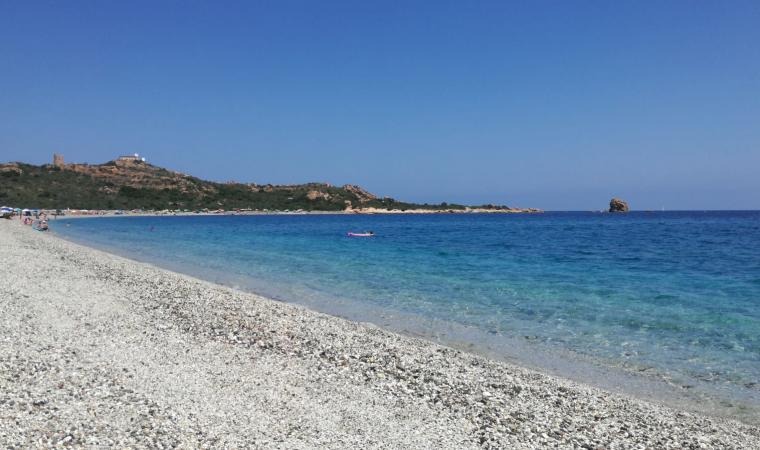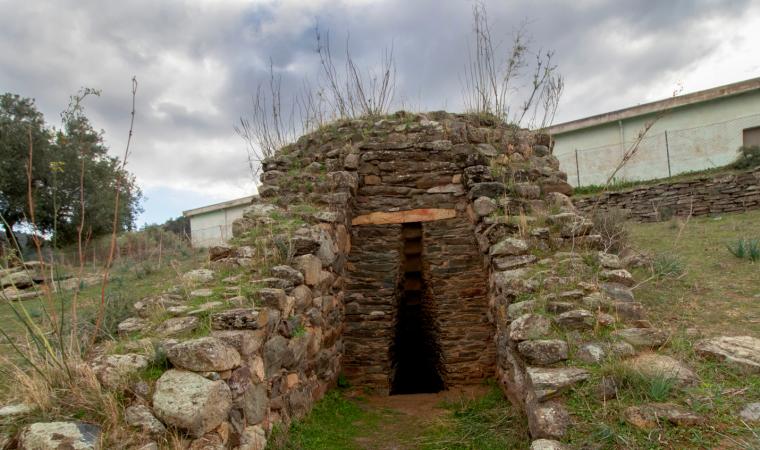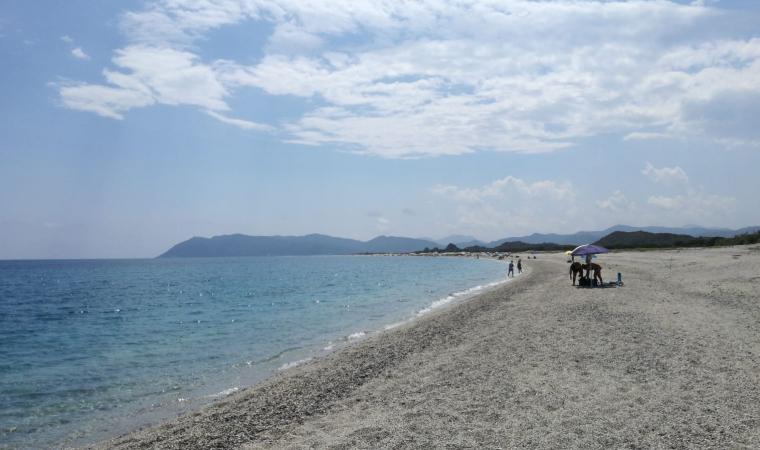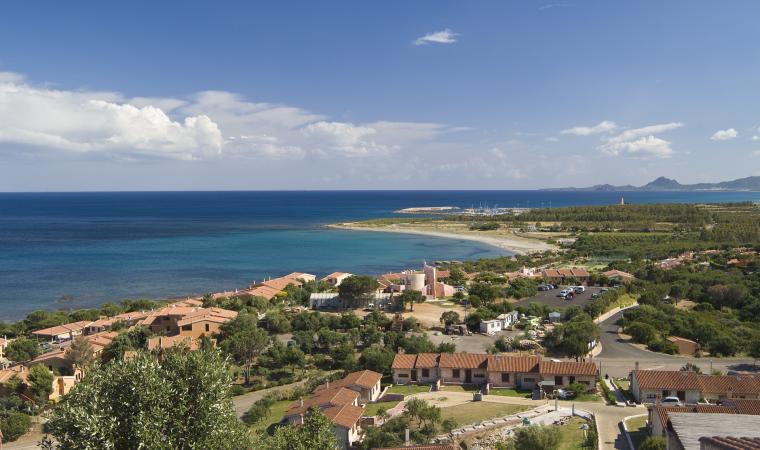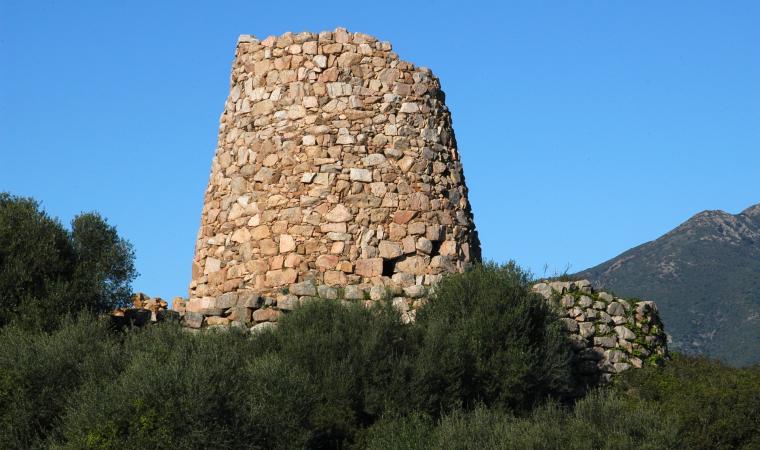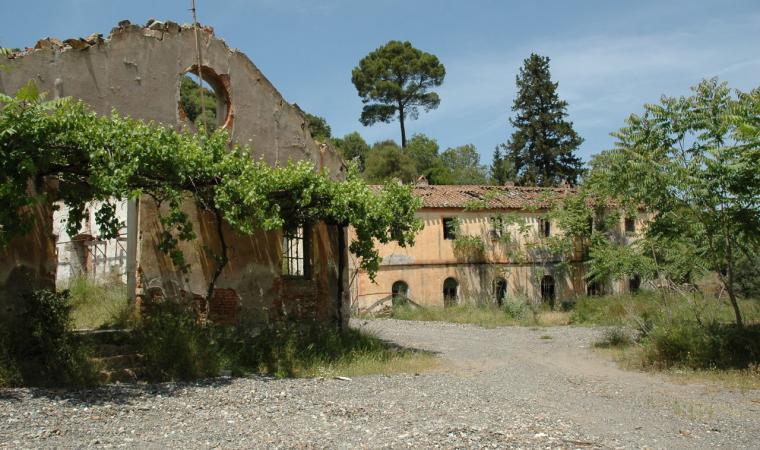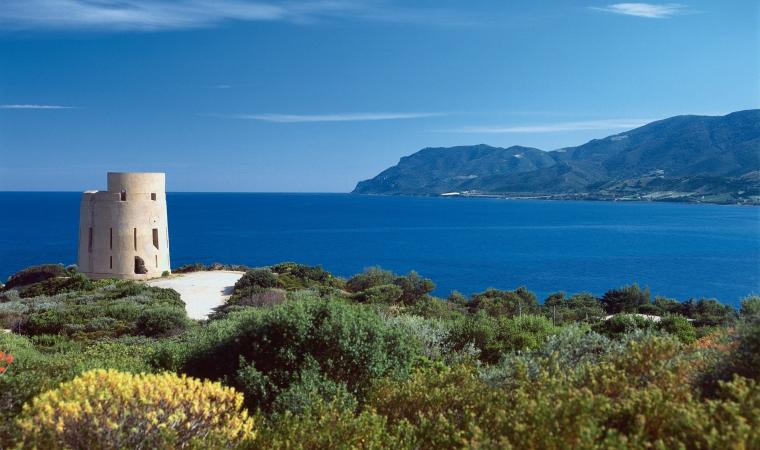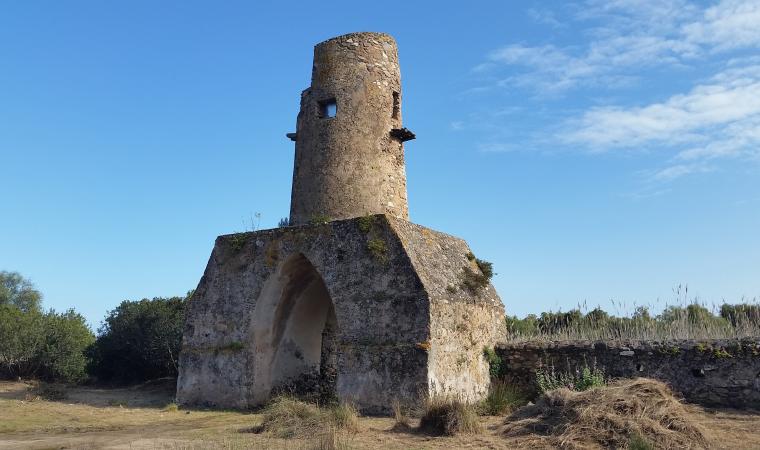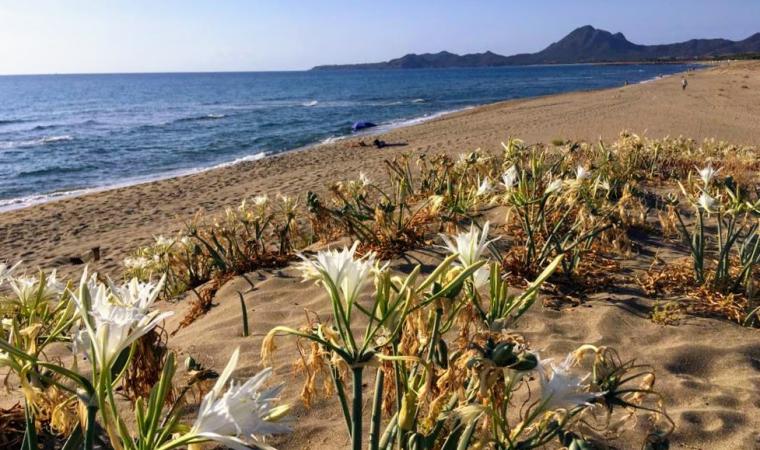To get to the Castle of Quirra, you'll have to take a stretch of the 'old' SS 125, the Sardinian Orientale so popular with bikers, and you'll think that 'the journey is as good as the destination'. Then you'll walk for twenty minutes along an arduous path until you reach its mighty walls besieged by wildlife. Finally, from up there, the view of Cala Murtas and Porto Corallo on one side and the Ogliastra Tacchi on the other, will remain etched in your memory for a long time.
Today, the Salto di Quirra testing range is part of the municipality of Villaputzu, a transitional territory between Sarrabus and Ogliastra. In the 12th century, when the judges of Cagliari built the castle on the hill of Cudias, it marked the border with the judicature of Gallura. The manor then passed to the Pisans and finally to the Crown of Aragon, which awarded it to the powerful Carroz family as compensation for their support during the wars of expansion. The castle of Cagliari and other fiefdoms in southern Sardinia also went to the Valencian nobles.
During the Spanish domination, the castle was the stronghold of the Marquisate of Ogliastra, a powerful and prosperous fiefdom that stretched from Tertenia to Santa Maria Navarrese and comprised 76 villages. Its castle must have been imposing and appeared impregnable, and it is still possible to see its large perimeter and walled enclosure with towers and two cisterns. From the top, you only have to look around to understand why the area was fiercely contested in the Middle Ages: its location was strategic for monitoring the coast and the access routes to the inland mines.
The fate of the fiefdoms and castles given to the Carroz family marked the life of Violante, who, at a very young age, was appointed to inherit the Ogliastra fiefdom after the death of her father during the fire in Cagliari castle. She was the last heir of the immense family fortune. Left alone and at the mercy of her relatives who tried to undermine her, she was able to impose her will and rule the fiefdom in spite of the family's wiles and also of the local Church, which condemned her for her extramarital affairs. The parish priest who dared to challenge her lifestyle was hanged and his body displayed as a warning in the castle grates. For this violent act, she was nicknamed the Bloody Woman and removed from the island she loved.
This is the story so far, but the legends about her are endless: one concerns the love of the Count of Mandas who wanted to marry her and take her with him. Violante demanded a condition that he considered impossible to fulfil: to reach the impassable castle of Quirra with a four-horse coach. The Count succeeded and took Violante away from her fortress, but the pain of leaving her homeland led to her death of a broken heart along the way. The mountain path they travelled today connects Quirra to Perdasdefogu, and in her honour and in memory of the sad tale is called sa Scala de sa Contissa. According to another legend, Violante Carroz died when she fell from her castle, leaving behind a golden loom hidden in one of the many caves on the slopes of the hill: many believed it was not a legend and searched for it, without ever finding it.



